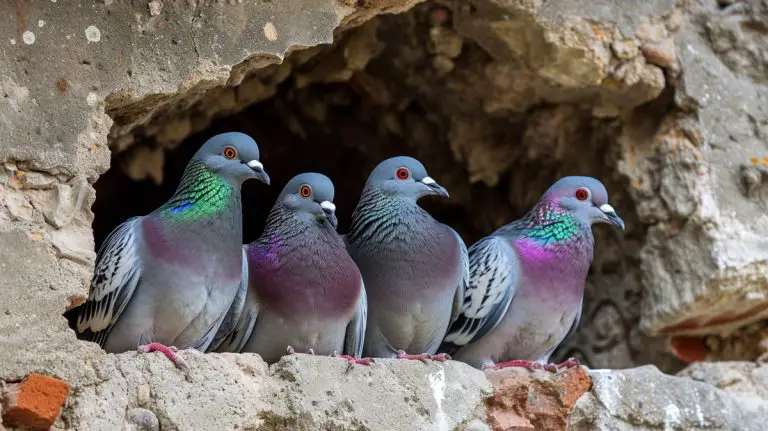17 Tumbler Pigeon Breeds – A Complete List
Welcome to our comprehensive guide on the different tumbler pigeon breeds. Our goal is to provide you with the necessary information to help you better understand these interesting pigeon species.
What are the tumbler pigeon breeds? Tumbler pigeons are a variety of fancy pigeons famed for their aerial acrobatics, rolling and tumbling in mid-air. Tumbler pigeons come in a variety of breeds, with roughly 17 different types.
You will be provided with a complete list of 17 tumbler pigeon breeds. This will include their physical appearance, personality traits, and history. So, don’t keep your eyes away.
Tumbler Pigeon Breeds
First, quickly jump into the tumbler pigeon’s different breeds and flights, as they’re popular for rolling in mid-air.

| Name | Origin |
| Armenian Tumbler | Armenian |
| Performing Tumbler | Australian |
| Saddleback Tumbler | Australian |
| Berlin Short-faced Tumbler | Germany |
| Berlin Long-faced Tumbler | Germany |
| Budapest Short-faced Tumbler | Hungary |
| English Long-faced Tumbler | United Kingdom |
| English Short-faced Tumbler | United Kingdom |
| Felégyhaza Tumbler | Hungary |
| Indian Tumblers | India |
| Iranian Highflying Tumbler | Iran |
| Komorner Tumbler | Austria – Hungary |
| Krasnodar Tumbler | Russia |
| Limerick Tumblers | Unknown |
| Shiraz Tumbler | Iran |
| Vienna long-faced tumbler | Austria |
| West of England Tumbler | England |
Please keep in mind that there may be some other pigeon breeds as well. These are some pretty common breeds we tried altogether.
However, you may notice Hungary, Australia, United Kingdom originated the most tumbler pigeon breeds. These pigeons are well-performing, have a long flight duration, and are fascinating.
As we know, people love to have short discussions. We wouldn’t make a separate section for every breed. Rather, we will talk based on the origin. For example, Berlin originated tumblers.
The Armenian Tumbler Breed
The Armenian Tumbler pigeon has a striking appearance. It has an average body size and a rounded head that can be created or uncrested. Let’s have a quick look at the Armenian tumbler pigeon in a nutshell
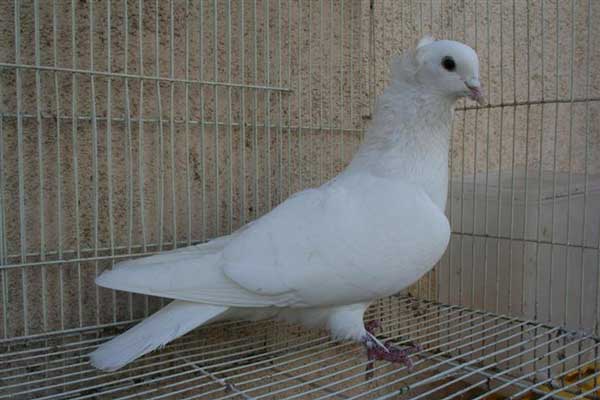
- Beak is medium in size
- The beak can be light pink or black
- Its eyes can have pearl, orange, yellow, or a combination of different colors
- Their neck can have a variety of colors such as black and yellow
- Its feathers are clear, smooth, and strong
- It even has feathers on its feet
- Able to fly for 2-3 hours
This breed of pigeon is kept primarily for its exceptional flying abilities. It is hardy and strong and performs acrobatics like rolls and spins in flight. Besides, it is a popular breed for flying in its native region of Armenia.
The Australian Tumbler Breeds
We mentioned two Australian tumbler breeds in the chart above. They are the performing tumbler and the saddleback tumbler. Both breeds have some similarities, as well as some unique features in its name.

However, let’s have a comparative overview of these two amazing tumbler breeds first.
| Feature | Performing Tumbler | Saddleback Tumbler |
| Purpose | Flying | Exhibition |
| Flying ability | Excellent | Excellent |
| Leg feathered | No | Yes |
| Back marking | Flat | Saddle-shaped marking |
| Head marking | Flat | Stripe or Spot |
| Colors | Various | Various |
| Rarity | Common | Rare except for the origin |
| Place of Origin | New south wales | Australia (State unknown) |
The two breeds are different in terms of their physical appearance. So the Performing Tumbler lacks leg feathers and the Saddleback Tumbler, on the other hand, has feathers on its legs.
Furthermore, the Performing Tumbler has a flat marking on its back, but the Saddleback Tumbler is characterized by its signature saddle-shaped marking.
One other thing is saddleback tumblers had been found way before performing tumbles. One was found in 1917, while the other one had found in 1991.
The color is also a similarity between the two. APTs usually are seen in red, kite, and almonds. Saddlebacks are seen in Black, Red, Yellow, Blue, Silver, Almond, and Andalusian.
Berlin Tumbler Breeds
So, the Berlin-based German tumbler pigeons can be sorted into two types. One is long faced tumbler, and the other is a short-faced tumbler. There are some similarities between these two breeds as they originated from the same region. But they have some differences as well.
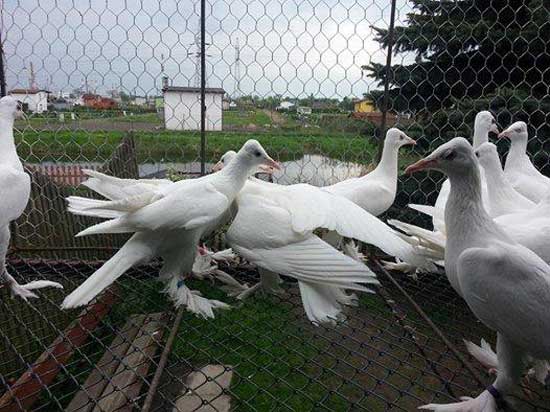
Let’s have a look at the features overview below:
| Feature | Long-faced Tumble | Short-Faced Tumble |
| Face Length | Long face | Short face |
| Beak Length | Long and straight beak | Short and rounded beak |
| Body Type | Slender and proportional | Stocky and muscular |
| Neck | Long and thin | Short and thick |
| Plumage | Tight and well-developed | Soft and fluffy |
| Tail | Tight and carried horizontally | Full and carried vertically |
| Wings | Tightly carried on the body | Loosely carried on the body |
| Leg Length | Long and fine-boned | Short and thick-boned |
| Color Variations | Black, blue, pearl, red, yellow | Similar color variations |
| Uses | Flying and Exhibition | Flying and Exhibition |
| Temperament | Playful and energetic | Stately and full of temperament |
| Popularity | Popular in the native area and some other countries | Popular in the native area and some other countries |
The two breeds have several differences. The Berlin Long-faced Tumbler has a slender and wedge-shaped head, and a long, narrow, and straight beak. Its body is slender and proportional. On the other hand, the Berlin Short-faced Tumbler has a broader head and a wider beak.
In terms of weight, the Berlin Long-faced Tumbler has an average live body weight of around 310 grams. Berlin Short-faced Tumbler is comparatively lighter in that case. Its average weight is around 250 grams.
Both breeds are raised for flying and exhibition purposes. Nevertheless, the Berlin Long-faced Tumbler is also popular as a pet. The Berlin Short-faced Tumbler is better suited for flying exhibitions.
So, while both breeds share similarities, there are significant distinctions too in between them.
The Hungarian Tumbler Breeds
As domestic pigeons, the Felegyhaza Tumbler and Budapest short-faced tumblers are two breeds that are quite popular. Both of these breeds have their own unique characteristics and appearances.
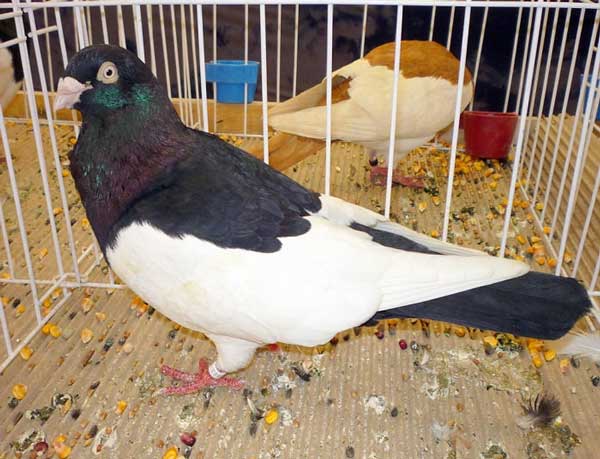
To help you better understand the difference between these two breeds, here is a comparison table highlighting the key differences between these two breeds.
| Feature | Felegyhaza Tumbler | Budapest short-faced Tumbler |
| Size | Average | Small |
| Appearance | Beautiful, distinctively marked | Square head, slim body |
| Purpose | Mainly for flying | Mainly for exhibition |
| Behavior | Strong and hardy, good flying ability, good for exhibition | Alert, active, responsive to human affection |
| Lifespan | 7-10 years | 7-10 years |
| Origin | Late 19th century | The first decade of the twentieth century |
Okay, let’s get straight to the point. The table compares the difference between two popular pigeon breeds. So, in a nutshell,
Felegyhaza Tumbler:
- This breed is an old one but not that ancient, developed in the late 19th century
- They are mainly used for flying purposes, and they have strong and hardy bodies, which make them good fliers
- They are also good for exhibition and can be raised as pets, but they have relatively good behavior and strong flying ability
Budapest Highflyer:
- This breed is a little guy, with an average weight of around 255 grams
- They are known for their square heads, slim bodies, and large bare flesh circles around the eyes. It somehow gives them a frog-eyed appearance
- Budapest Highflyers was originally developed as a flying breed, but today they are mainly raised for exhibitions
- They are known for their wonderful personalities, alertness, and happy natures, and usually respond well to human affection
The United Kingdom Tumbler Breeds
Three English breed tumbler pigeons make up this section. West of England tumbler, Long-faced tumbler, and Short-faced tumbler. Let’s have a glance at their traits and qualities in the table below.
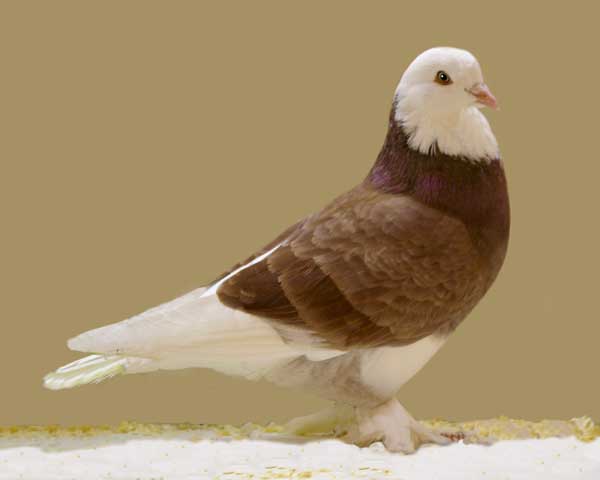
| Features | Long-Faced Tumbler | Short-Faced Tumbler | West of England Tumbler |
| Body Type | Long and slender body | Compact and rounded body | Average size body |
| Beak | Long beak | Short beak | Medium length beak |
| Muffs | Long, fluffy muffs | Short, round muffs | Medium length, fluffy muffs |
| Purpose | Primarily for flying | Primarily for exhibition | Dual purpose (flying and exhibition) |
| Temperament | Active and playful | Calm and friendly | Calm and friendly |
| Color Varieties | Limited | Limited | Many |
| Lifespan | 7 – 10 years | 7 – 10 years | 7 – 10 years |
| Average weight | 340 – 375 gram | 250 – 290 gram | 255 – 340 gram |
English Long-faced Tumbler pigeons are larger than average with a long face and narrow body. They are good flyers with long glides.
English Short-faced Tumbler pigeons, on the other hand, are smaller than average with a short face and round body. They are good flyers too, but with short glides.
However, West of England Tumbler pigeons have an average size with a round body and medium-length face. They are well known for their tameness and calm attitude. They are excellent flyers with occasional tumbling
In summary, they share a geographic origin. Surprisingly, though, they differ from one another more. However, you could have anticipated that they would be more alike.
The Iranian Tumbler Breed
We will specifically talk about Iran-based tumbler breeds named high-flying tumblers and Shiraz tumblers. Let’s quickly look at some of their features first.
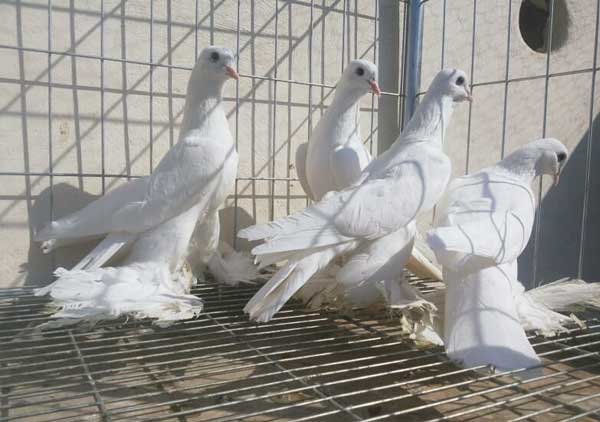
| Features | Highflying Tumbler | Shiraz Tumbler |
| Other names | None | Shakhsharli, Shirazi, Shaik, Saksarli, Lahouri, Domgir |
| Size | Medium | Medium |
| Weight | 400 – 800 gram | 340 – 425 gram |
| Colors | Various | Various |
| Physical features | Long tail feathers, round head, black or dark brown eyes | Roundhead, Black or dark brown eyesWhite head and neck forming a V shapeMuffed legsBroad breast |
| Uses | Flying, Exhibition, Ornamental | Flying, Exhibition, Ornamental, Pet |
| Flying abilities | Good flyers, can fly high | Good flyers, fly as a kit, limited flight height |
| Temperament | Good behavior, easy to tame | Good behavior, easy to tame |
You can see from the table above that both breeds are relatively similar, with the exception of a few morphological characteristics. They fly well and are a little in weight. Although high-flying tumblers are renowned for their high-flying powers, Shiraz tumblers are far less skilled at doing so.
However, both breeds are unique and stunning birds. So why settle for a regular pigeon when you can have a funky, flying fashionista of a bird? Get your hands on a Shiraz Tumbler today!
The Other Tumbler Breeds
Except for the above-mentioned breeds, some other breeds originated from various regions such as Austria, India, and Russia. The name may include Krasnodar Tumbler, Komorner Tumbler, and Vienna long-faced tumbler.
They are typically good at flying. Also some might be good for the exhibition. But they have a beautiful appearance.
The Komorner Tumbler pigeon origins date back to the 18-19th century in the city of Komárno in the Austrian Empire. It is imported into the US in the late 1920s. The Indian tumblers might like to join the party with the same features, along with being fancy and beautifully appearing.

There hasn’t been much development of the Russian tumbler breed. As a result, it is still categorized as having less global recognition. This type also has excellent flying abilities.
All in all, they all have kind of similar features on some particular characteristics such as appearance and flying ability despite originating from different countries and states.
If you’re interested in learning more about pigeon behavior and health, you might find our articles on can pigeons fly at night and pigeon diarrhea helpful. Our article on can pigeons fly at night sheds light on the flight patterns and behavior of pigeons during nighttime, while our article on pigeon diarrhea explores the causes, symptoms, and treatments for this common health issue. Check them out to deepen your understanding of pigeon behavior and health.FAQs
Don’t go away. This section will offer you something more to learn.
Short-faced tumbler pigeons usually are 140 – 142 grams. Long-faced tumblers, on the other hand, can be up to 800 grams.
There are no specifications on how long tumblers can live. It depends on the origin and their activity. But in general, some tumblers are reported to survive for approximately 10 years in native environments.
It is probably India that produced the most ancient tumbler pigeon breed. This tumbler was very small, weight around 150 grams. It was used for an exhibition at that time.
Conclusion
And so, there you have it, folks! The world of fancy pigeon breeds is a diverse and colorful one as each breed boasts its own unique characteristics and lifestyle. They have been seen for ages in the old Indian street or the rolling hills of Vienna, showing how it never fails to be captivating.
From the high-flying tumbler to the charmingly elegant Komorner, these avian wonders are truly a marvel to behold. Regardless of their place of origin, they all share a common bond in their striking appearance and aerial prowess. So, why not spread your wings and explore the fascinating world of pigeons today?






